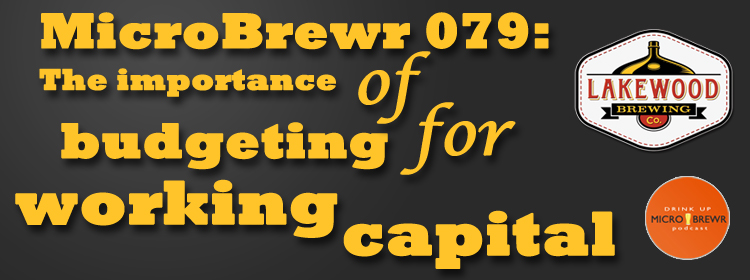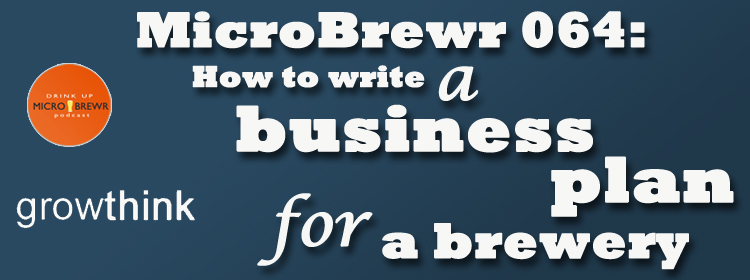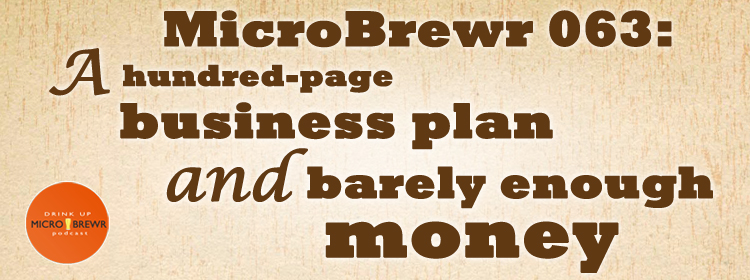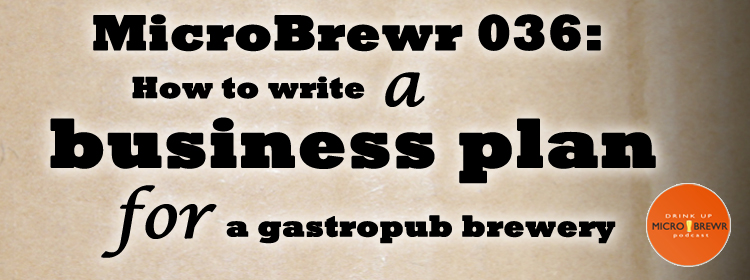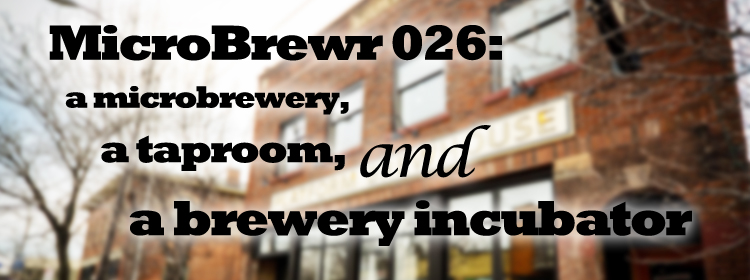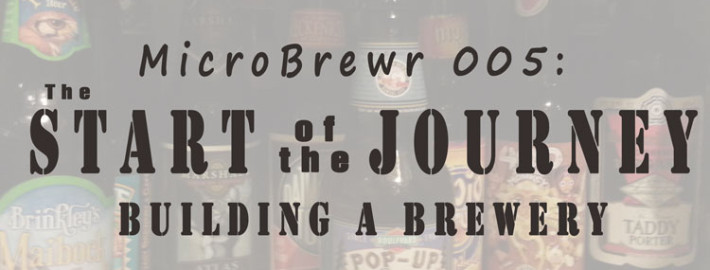How big should my brewery be?
How big should my brewery be? How many square feet do I need for a brewery? How large of a facility should I get? As the host of a podcast about how to start a brewery I have spoken with over 70 brewers, brewery owners, and other experts in the craft beer industry. So I often hear this question from listeners around the world.
Of course you need to consider a number of factors to determine the size of your brewery. For example:
- Size of your brew system
- Your annual production capacity
- Barrels of beer you plan to brew each year
Just the business model plays a major role in deciding how many square feet you’ll need for your brewery.
- Brewpub serving only on-site consumption
- Nanobrewery with taproom and no distribution
- Production brewery with complete bottling, canning, and kegging lines
As you could imagine, there is no one-size-fits-all size requirement. It’s a tough question to answer, but an important answer to find out.
If your brewery is too small, you’ll be crowded for space.
“We did not anticipate the need for more cold storage or bigger brewing system,” says Patty Elliot from Pecan Street Brewing in Johnson City, Texas.
“Even though we have a big building, we don’t have a large area for Sean [the brewer] to store kegs in and we only have four serving tanks. So serving tanks have to get low enough that he could keg off, that it will fit in the keg storage area, so that he could brew another beer. So we’re constantly fighting the battle… and we’re desperately wanting to get more cold storage space.”
And if your brewery is too large, you waste precious money on the startup cost for square footage that won’t be used.
Yet, with craft beer’s explosive growth that doesn’t seem to be letting up anytime soon, you’ll likely be expanding operations not long after opening.
When MicroBrewr founder, Joe Shelerud asked 61 brewers in late 2013, “What do you wish you had known before starting your brewery?” nearly 20% of the responses were that they should have planned their expansion from the start.
“I would have built a larger infrastructure at the outset,” says Brett Tate from Dust Bowl Brewing Company. “We’ve expanded the operation and reached capacity production three times since we started brewing in 2009. We’ve now maximized what we can fit in the footprint of our current building… Our new site will, or course, have room to grow, so at least we’ve learned!”
Space requirements for a brewery vary greatly
If you read the books about starting a brewery and online beer forums, you can find magic formulas to tell you how big your brewery should be.
For example:
- 1,000 square feet, per barrel of brewhouse running at capacity
- 1 to 1.5 square feet, per barrels produced, per year
JVNW’s website has a lot of information and brochures with specifications and resource requirements. As a manufacturer of brewing equipment, they work with a lot of different breweries in a huge variety of configurations.
JVNW’s sizing recommendations are:
- Complete brewery: 0.5 to 1 square feet, per barrel of yearly capacity
- Sacked malt storage: 0.15 to 0.25 square feet, per barrel of yearly capacity
Again, a number of factors will affect the space requirements for your specific brewery and configuration. For example:
- Size and number of vessels in the brewhouse
- Size and number of fermentation vessels and bright tanks
- How many batches you plan to do each week
Incidentally, JVNW says the average staff requirement is 0.75 staff per 1,000 barrels of yearly capacity. Whereas, Lakewood Brewing, the one who recommends 1,000 square feet per barrel of brewhouse, has 22 staff for about 10,000-15,000 barrel production. So about 1.76 staff for every 1,000 barrels—roughly double what JVNW recommends.
So my takeaway is just that the stats vary greatly.
Space requirements for breweries on MicroBrewr Podcast
To get a handle on exactly what the square footage requirement is for a small craft brewery, MicroBrewr Podcast listener, Akhilesh Pandey dug into the stats from the show notes.
Another podcast listener, Peter Stillmank from Stillmank Brewing Co. in Green Bay, Wisconsin, asked for these stats to get a better picture of our discussions in MicroBrewr Podcast. At episode 41, I started asking for specific statistics including: size of the brewhouse, number of vessels, annual capacity, and square footage.
For this exercise, we were concerned only with how many square feet are required for a small craft brewery.
So Akhilesh dug into the numbers and plotted them into a spreadsheet. He compared each brewery’s annual capacity to its square footage, and calculated the square footage per barrel of yearly capacity.
What were the results?
Well, we looked at the data from 20 different breweries from all over the U.S. plus one 1 in Ireland. (We had to leave out a few due to incomplete data.) Models include everything from a tiny nanobrewery in the basement of a hotel, all the way up to a large production brewery with international distribution, and everything in between. We’ve spoken with nanobreweries, brewpubs, and production packaging breweries.
If we take the total square footage for all breweries and divide it by the total yearly capacity of all breweries, it equals 0.8 square feet required per barrel of yearly capacity. This gives sort of an industry-wide efficiency, but it doesn’t really look at what each brewery is doing on an individual basis.
Craft beer is a young industry. It’s home to a wide variety of players with varying levels of experience, knowledge, and preferences. So the range of their space efficiency is extremely wide.
When we calculate the square footage per barrel of yearly capacity at each individual brewery, the maximum was 40 square feet, the minimum was 0.2 square feet, and the average (mean) was 4.6 square feet per barrel.
Square footage per barrel of yearly capacity at 20 craft breweries in the U.S.A. and Ireland:
| Calculation method | Square feet per yearly barrel production capacity |
| Maximum | 40.0 |
| Minimum | 0.2 |
| Average (mean) | 4.6 |
| Median | 1.6 |
| STD Dev. with 99% confidence | 2.16 |
| Range | 39.8 |
That seemed kind of high. I thought maybe the average was being skewed by outliers.
So I checked the median. The median is 1.6 square feet per barrel of yearly capacity.
Median is often used to calculate skewed data sets. It sort of cancels out those outliers like the nanobrewery that uses a whopping 40 square feet per barrel produced, and the brewpub/production brewery that somehow blasts out a full barrel of beer for every 0.2 square feet they occupy.
Now, I’m not a mathematician, I don’t recall much from Statistics class. But Akhil has more insight to offer.
“The average the way you have it there,” he writes by email, “is not the right method because it does not eliminate the outlier.”
Akhil looked at the “standard deviation” (I remember that term from Statistics class) and found that those few data points that are just so far from the others, don’t really help us. They’re considered oddballs. By taking off the 3 outliers from the end, Akhil can get 99% confidence in his calculation.
With 99% confidence, we can guess that your brewery would need 2.16 square feet per barrel of yearly capacity.
So there you have it
How much space do you need for your brewery in planning or for your next expansion brewery?
First figure out how many barrels of beer you plan to be able to produce per year, your total capacity.
Then figure on needing about 2.16 square feet per barrel of yearly capacity.
Another way of looking at it, says Peter, “When you purchase your building, divide the square feet by 2.16 to figure out what the building’s [annual production] capacity is. When you reach this [production level] it will be time to move.”
Special thanks to longtime MicroBrewr Podcast listeners, Peter Stillmank and Akhilesh Pandey for your help on this post.
Image showing Blueprint by Will Scullin on flickr (CC BY 2.0) was modified from its orignal state.
Join the mail list
Don’t miss other great posts like this one.
Sign up for the email list: Sign me up!


